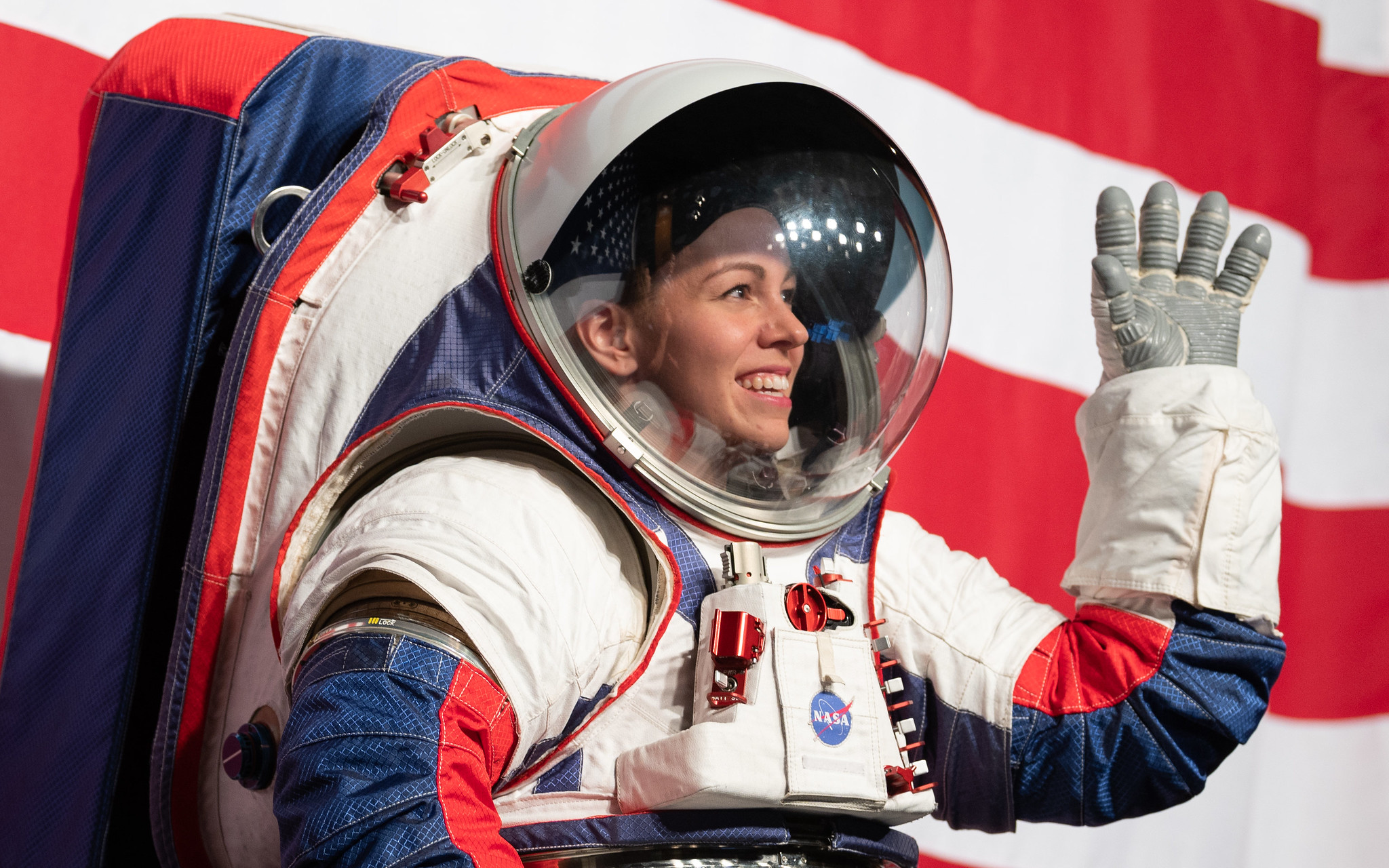NASA reaches out to commercial partners for new spacesuits and spacewalk tech
They could be used on the moon by Artemis astronauts.

NASA is looking to commercial partners to help develop the next generation of spacesuits and spacewalk technology.
In a request for information (RFI) published April 14, NASA revealed that it is looking for feedback from the space sector on its newly updated strategy to work with commercial partners in space. In this new strategy, NASA is looking to collaborate more with commercial partners in developing, building and maintaining technology for spacewalks, or extravehicular activities (EVAs), including spacesuits, the agency said in a statement.
Under this new strategy, the agency will be "shifting acquisition of the exploration extravehicular activity (xEVA) system to a model in which NASA will purchase spacesuit services from commercial partners rather than building them in-house with traditional government contracts," the statement reads.
This means that NASA will look to commercial space for spacesuits and related hardware that astronauts will use for missions to both the International Space Station and to the moon under NASA's Artemis program, which aims to return humans to the lunar surface by 2024. NASA added that this gear and tech will be used for the agency's planned Gateway lunar space station.
Related: The evolution of the spacesuit in pictures
"We hope to receive industry input on the feasibility of shifting our exploration spacewalk acquisition activities to a service-based model like our procurement for commercial cargo and crew services," Mark Kirasich, deputy associate administrator for NASA's Advanced Exploration Systems at the agency's headquarters in Washington, said in the same statement.
"This partnership opportunity will allow NASA and industry to work together as commercial space markets in low Earth orbit and beyond rapidly mature, allowing government investments to accelerate industry and our Artemis exploration plans, together."
Breaking space news, the latest updates on rocket launches, skywatching events and more!
This isn't the first time NASA has reached out to the commercial space sector for collaboration. Currently, NASA works with commercial partners such as SpaceX and Boeing to develop and provide crew capsules for missions to the space station. Additionally, NASA just announced that, after a competition between three companies, SpaceX received the contract to build the lunar lander for the agency's Artemis program.
"We are always looking at ways to lower costs for the taxpayer and focus our efforts and resources on future technology and our bold missions in deep space," Kirasich said, adding that "NASA has a responsibility to taxpayers and future explorers to reexamine its infrastructure as needed to reduce costs and enhance performance," he said. "As part of this strategy, the agency is opening the door to maximize competition and to commercialize space, including spacesuits and EVA capabilities."
While NASA will be reaching out to and collaborating with commercial space companies on this technology going forward, the agency will continue to develop its xEVA system, which includes its xEMU spacesuit — a next-generation spacesuit NASA designed "in house" with Artemis in mind, NASA said in the statement.
"Our team has developed incredible knowledge about spacewalking and spacesuit activity over the last several decades and extensively studied the unique environments our astronauts will need to operate in," Chris Hansen, manager of the Extravehicular Activity Office at NASA's Johnson Space Center in Houston, said in the same statement. "We hope to pair that with the ingenuity of the private sector to enable a versatile EVA capability."
Email Chelsea Gohd at cgohd@space.com or follow her on Twitter @chelsea_gohd. Follow us on Twitter @Spacedotcom and on Facebook.

Chelsea “Foxanne” Gohd joined Space.com in 2018 and is now a Senior Writer, writing about everything from climate change to planetary science and human spaceflight in both articles and on-camera in videos. With a degree in Public Health and biological sciences, Chelsea has written and worked for institutions including the American Museum of Natural History, Scientific American, Discover Magazine Blog, Astronomy Magazine and Live Science. When not writing, editing or filming something space-y, Chelsea "Foxanne" Gohd is writing music and performing as Foxanne, even launching a song to space in 2021 with Inspiration4. You can follow her on Twitter @chelsea_gohd and @foxannemusic.
